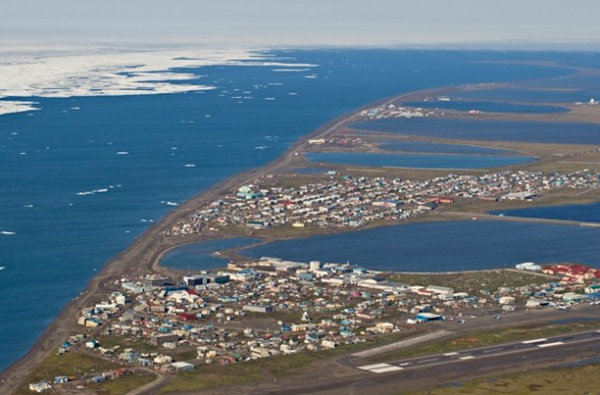By David Chandler
Take an Arctic Tour by flying north of Fairbanks to Dead Horse, on the northern edge of Alaska's North Slope. This unreserved wilderness area, stretching to an indescribable horizon at the Arctic Ocean, is home to caribou, grizzly bear, musk oxen, and so many more species of mammals. A great place to start is with an orientation to the region, then moving on to a tour of the shores of the Arctic Ocean, finishing up with an overnight stay in Dead Horse at the Arctic Caribou Inn.
Source: http://www.alaskapublic.org/
Start early to get a morning view of the waterfowl and other tundra life. You will find the scenery is conquered by the rugged and majestic Brooks Range, the domain of traveling packs of wolves, Dall sheep, lone wolverines, arctic hare, lemmings, and other wilderness-dependent species. The affluent procession of wildlife found within this region includes more than 160 bird species, 36 kinds of land mammals, nine marine mammal species, and 36 types of fish. Explore historic mining roads above the community of Wiseman Hike within the border of the Gates of the Arctic National Park.
Source: https://www.nps.gov/gaar/
Then enjoy a scenic float on the Hammond or Koyukuk Rivers. By crossing over the Arctic Circle, some tour companies will give you an official Arctic Circle Adventure Certificate. Have a picnic at the mighty Yukon River. Be in awe of the beauty of the northland's most famous waterway and learn of the rivers storied past. Visit the Arctic Circle Trading Post situated in the rural community of Joy, Alaska. While traveling to the very end of the Dalton Highway, the Brooks Mountain Range, the oilfield of Prudhoe Bay, the Arctic National Wildlife Refuge an the Arctic Ocean, you will see tundra, an historic mining camp, and have a good chance of viewing lots of wildlife.



